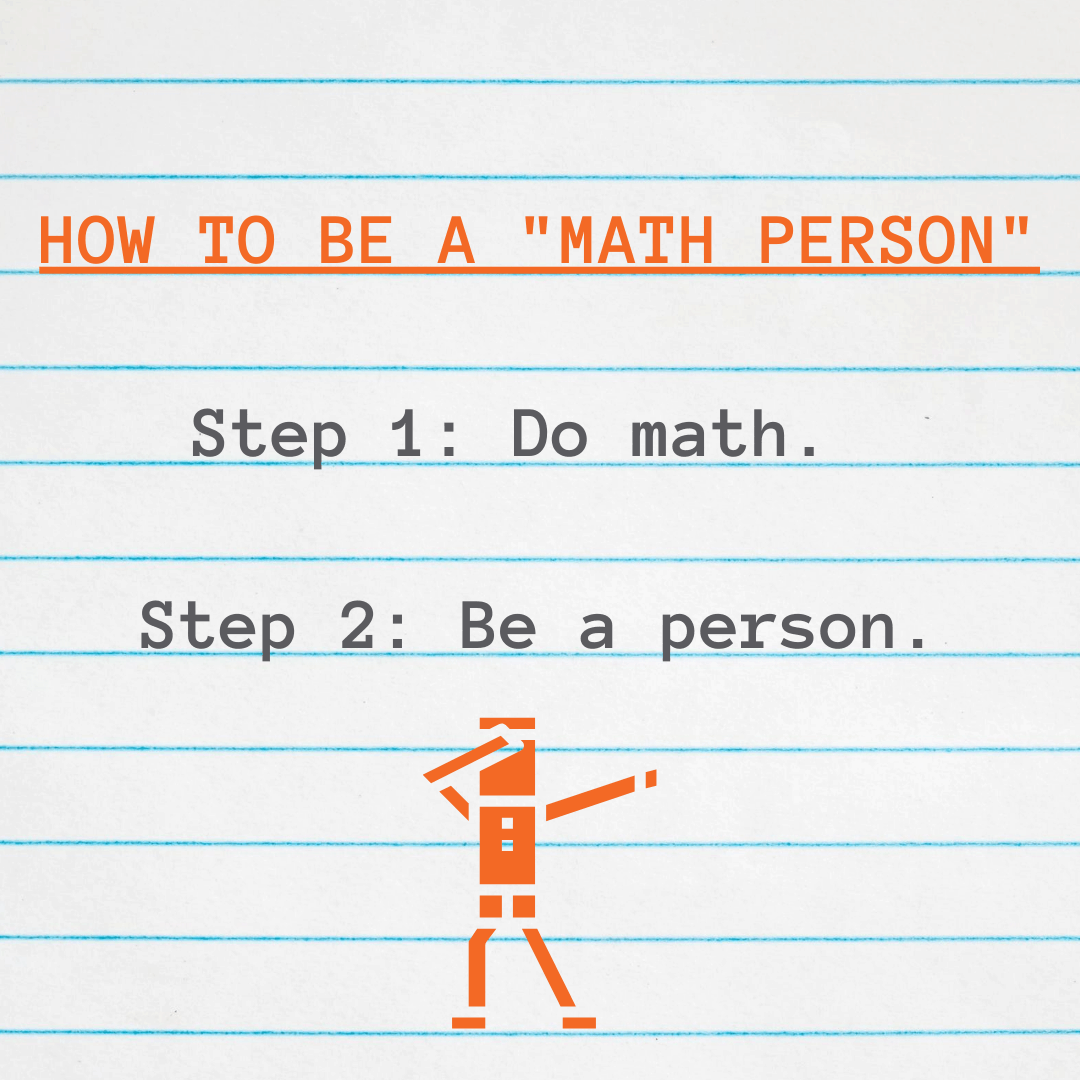“I am not a math person, but . . .”
Every syllable of this seven-word qualifier, which leaders often say before they share thoughts about teaching and learning mathematics, stings my soul. These words perpetuate the stereotype that there are people who can, and people who cannot, do mathematics. They also reveal our collective lack of clarity around what it means to be “good at math.”
The language we use matters. How we speak about different content, how we speak about our students, how we speak about fellow educators—each and every word we choose matters. Our identity as a learner also has a profound impact on our capacity to lead and shapes how we engage in learning outside our comfort zones.
When a school leader says, “I am not a math person, but . . .” it implies the math teacher needs to focus solely on the content because they are the only one who can or will. It perpetuates the “I’m just a math teacher and need to focus on my content” mentality. When we adopt that mentality, we pass up an opportunity to help students see how they can use mathematics as a tool to understand and fight the injustices in their communities, our society, etc.
Our students will be coming to us with some degree of emotional trauma as they navigate life as a kid during a pandemic and during a national reckoning on the impact racism has had and continues to have on the soul of our country.
Mathematics educators face another challenge this fall: addressing unfinished learning without unintentionally exacerbating educational inequities. This isn’t a new challenge, but in light of extended school disruptions due to COVID-19, the stakes of getting it right for each and every student are greater than perhaps ever before. All students will have unfinished learning in Tier 1, and all students deserve access to grade-level mathematics. Teachers need to manage this balancing act in any learning environment, including remote, hybrid, and shifting settings.
Two facts: We are better together, and we can do hard things.
Leaders, there is good news: we don’t have to do this alone! A number of organizations have released free, high-quality tools we can leverage to help us make the best instructional decisions for our students—here are two I like a lot:
- Student Achievement Partners created the 2020–21 Priority Instructional Content in English Language Arts/Literacy and Mathematics, which offers “guidance for the field about the content priorities by leveraging the structure and emphases of college- and career-ready mathematics and ELA/literacy standards.” Leaders can leverage this tool in order to support great math instructional decisions at the building or district level. This tool can support design modifications to scope and sequence documents. It can also guide the design of professional learning opportunities for teachers. It can be used to modify district-created instructional materials where used and to support leaders in implementing equitable instruction and equitable structures in school or system.
- Instruction Partners released Math Guidelines for Distance Learning Models, which describes content and pedagogy adjustments teachers can make to advance and preserve student learning in a distance-schooling scenario. Leaders can use these guidelines to inform teacher training, planning, and coaching.
In my organization, Instruction Partners, we root our resources in our learning aspirations for the year:
-
- All students access grade-level content.
- Teachers address unfinished learning in service of grade-level content.
- Teachers check for understanding and misconceptions.
- Students receive feedback on their work.
- Students own their learning.
- Tier 2 supports Tier 1 instruction.
We also continue our internal learning using a “3 to read” structure, sharing with each other articles and resources around a common theme. I’ll use this structure to share with you three more resources that help leaders support math teachers (and students) this fall:
- Our interview with Deborah Loewenberg Ball from the University of Michigan
- Illustrative Mathematics’ unfinished learning resources
- Our guidelines for effective distance learning practices
The language we use matters.
As we re-engage in schooling this fall, whether it be in-person learning, distance learning, or some hybrid of the two, leaders have to lean into the vulnerability of being a lifelong learner. We must do this on behalf of our staff and students so that we can support mathematics educators in teaching, and reaching, every child. Now that you’ve grown your brain around supporting excellent mathematics instruction in the fall, you’ve earned your spot in the “I’m a Math Person” club!

















